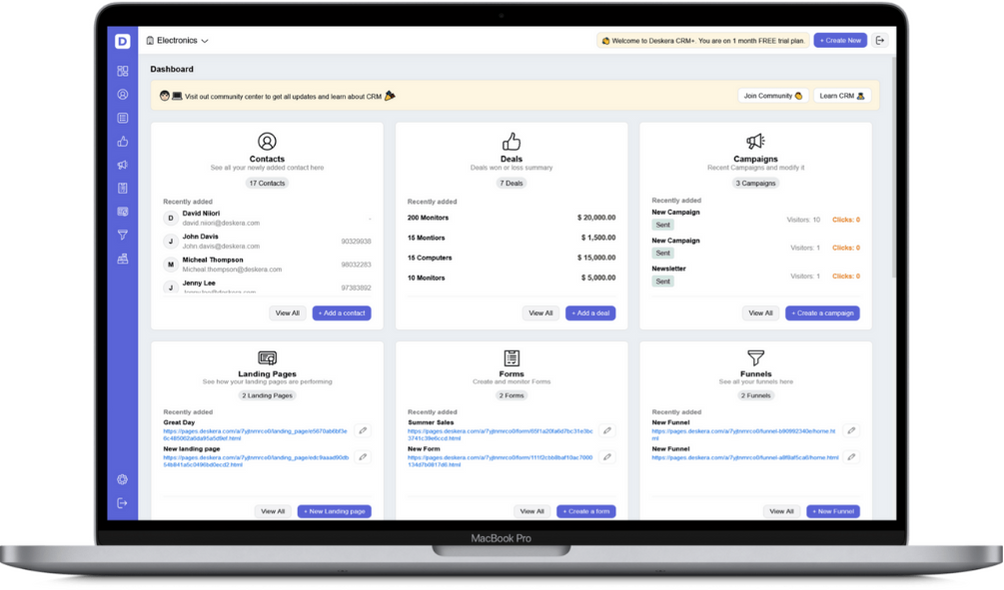You have been managing your advertising campaigns really well; but how will you calculate the success of the campaign?
There must be some way, some metric that enables you to determine how well has your campaign faired so far. CPM is one such metric that helps you know how your advertising campaign has been fairing, has there been progress since the time you started.
We shall be learning about the CPM and the other terms surrounding it.
In this article:
- What is CPM in Marketing?
- Benefits of CPM
- How to calculate CPM and CPM Formula
- Why is CPM important?
- Terms related to CPM
What is CPM in Marketing?
CPM or the Cost per mille is an important metric that represents the efficacy of the online marketing campaigns. A lower CPM is indicative of a good and optimized marketing campaign.
The word ‘mille’ is Latin for a thousand. This metric allows you to calculate the cost for every thousand impressions on your advertisement. Each impression counts as one appearance of the ad. The advertiser pays for every thousand views of an advertisement when the CPM is implemented.
So, we can say that as a metric, CPM helps you to keep a watch on your expenditures made for the digital campaigns. Your digital campaigns include the ones on Google AdWords, LinkedIn Ads, Facebook Ads.
Benefits of CPM
There are several ways in which CPM can benefit a business, including the following:
- Increasing sales conversions: When you pay per thousand views, ads with high conversion rates tend to perform extremely well. This will ultimately lead to increased sales conversions
- High visibility: Making your ad CPM optimized is a great way to establish or expand the value of your brand, making it stand out
- Promote to relevant audiences: Placement of CPM ads on sites that are frequented by prospects is highly effective from a sales and branding standpoint
How to Calculate CPM and CPM Formula
CPM can be calculated with the formula given below:
Calculate CPM by following these steps:
Establish your advertising budget
Setting a budget for your advertising campaign is the first step. For a better understanding let us consider an example. where suppose you spend $10,000.
Establish your target number of impressions
The next step is to determine the number of impressions you want to generate from your campaign. Consider a campaign whose goal is to receive 250,000 impressions.
Calculate CPM
The CPM is calculated by dividing the cost of a campaign by the number of impressions you want and multiplying that number by 1,000.
Applying the CPM formula:
CPM = 40
If you want to invest $10,000 in your campaign and achieve 250,000 impressions, you divide 10,000 by 250,000, which equals 0.04. You then multiply that number by 1,000, which equals 40. You would need to spend $40 per 1,000 impressions on a campaign that has a $10,000 budget.
Why is CPM Important?
With CPM, you can:
- Identify and analyze viewership generation;
- determine the cost-effectiveness of different media resources;
- devise new marketing stages;
- determine the effectiveness and performance of previous advertising campaigns.
Terms related to CPM
There are many other KPIs that advertisers use to gauge the performance of their campaigns. Let’s look at each one of them in detail:
CPA
Companies pay for new customers when they run a marketing campaign; this is called cost per acquisition or CPA. An organization measures the impact of a campaign on its revenue using CPA. CPA isn't standardized and therefore, there is no threshold value. Customer acquisition costs will be determined by the prices charged, operating expenses, and profit margins.
CPC
The cost-per-click is how much you pay for every time someone clicks on an ad during a marketing campaign. Cost-per-click is applied to both social media and search engine campaigns. There are several factors that influence the CPC. These include the ranking with other advertisers bidding on the same keyword, the quality score, and the maximum bid.
CTR
Click-through rate is known as CTR and represents how many users click on a link compared to how many users view a page or advertisement. Another way to put it is, it is a ratio that tells you, from all the people who saw your ad, how many clicked on it.
Your website's or landing page’s click-through rate helps you determine whether your marketing campaign was successful. The higher the click-through rate, the more likely people are to find your ad relevant, whereas the lower the CTR, the less relevant your ad is considered to be. You will have different CTRs depending on your industry, your keywords, and the campaign you are running. Therefore, there is no identified convention to convey a good CTR.
PPC
PPC is short for pay-per-click. As the name goes, the PPC works on a model where the advertiser pays a charge whenever the users click on their ads. Visitors aren't earned organically, but the advertisers pay to have visitors to their sites.
ROI
ROI or return on investment is a term that is troublesome for most managers. When it comes to marketing, managers need to ensure that they achieve their financial targets as planned against the investment made. There are considerable sums of money that go into generating sales and leads. Moreover, the sales processes can be lengthy and may take time to show great results. Eventually, this leads to a delayed identification of ROI.
However, despite the slow process, the ROI may show a better picture in the end. Another challenge could be, because some campaigns are carried out for brand awareness, determining their ROI can be difficult.
How can Deskera Help You?
It is imperative to learn about the effectiveness of advertising campaigns to achieve better leads and grow your sales prospects.
With Deskera CRM, automate your sales and marketing, generate new leads, and analyze performances with this world-class platform.
So why wait? Sign-up to access remarkable features now!

Key Takeaways
- CPM or the Cost per mille is an important metric that represents the efficacy of the online marketing campaigns
- A lower CPM is indicative of a good and optimized marketing campaign
- This metric allows you to calculate the cost for every thousand impressions on your advertisement
- Increasing sales conversions, better visibility, and promote to the relevant audience are some of the benefits of CPM
- Identifying and analyzing viewership generation and determining the cost-effectiveness of different media resources are some of the purposes that CPM serves
- CPA, CPC, PPC, ROI, CTR are some of the terms that are closely related to CPM
Related Articles














